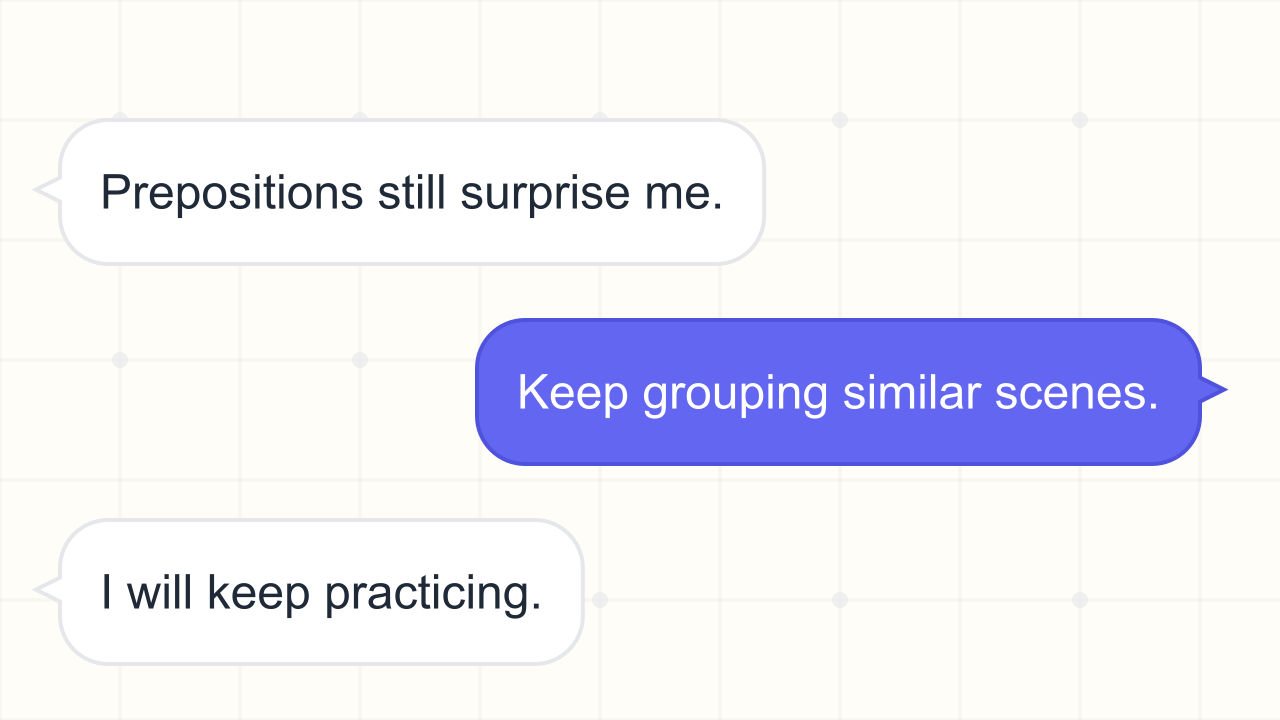To Be: Is, Am, Are grammar Exercise
Practise choosing the correct form of the verb “to be” — is, am, or are — in present simple sentences about people, places, and things.
Exercise Guide
How to complete:
Read each sentence carefully and decide whether the blank needs "is", "am", or "are". Pay attention to the subject and whether it is singular or plural.
- I always uses "am"; use "is" for he, she, it, or singular nouns.
- We, you, they, and plural nouns take "are".
- Check for words like "here" or "today" to keep sentences natural.
Success tips:
- Swap the subject for a pronoun (he, she, it, they) to test which form fits.
- Remember contractions: "I'm", "she's", and "they're" show the same choices.
- Look at the noun right after "there" or "here" to decide on singular vs plural.
- Read the full sentence out loud; the correct verb of "to be" will sound natural.
Knowledge:
Choosing between "is", "am", and "are" seems simple, but daily speech includes subjects like groups, mixed names, and places that can make the choice less obvious. These sentences help you respond quickly and confidently.
Watch for signals such as "my friends" (plural) or "the weather" (singular). By focusing on the real subject of each statement, you will strengthen your instinct for matching subjects with the correct form of "to be".
Complete the Exercise
Paragraph 1
Paragraph 2
Paragraph 3
Paragraph 4
Paragraph 5
Paragraph 6
Paragraph 7
Paragraph 8
Paragraph 9
Paragraph 10
Paragraph 11
Paragraph 12
Paragraph 13
Paragraph 14
Paragraph 15
Share this exercise
Help others learn grammar by sharing this exercise
Related Exercises

Modal Verbs of Obligation (must, have to, should)
Practise choosing “must”, “have to”, or “should” to express obligation, necessity, and recommendations in real-life contexts.

Modal Verbs of Permission (may, can, could)
Practise choosing “may”, “can”, or “could” to ask for permission, give consent, or describe rules politely.

Modal Verbs of Ability (can, could)
Practise selecting “can” or “could” to express ability, requests, and possibilities in everyday situations.

Have got vs has got
Practise choosing between "have got" and "has got" to express possession, relationships, and characteristics accurately.

Prepositions Part 4
Challenge yourself with extended scenes that weave together direction, timing, tools, and placement so you can choose precise prepositions in complex contexts.